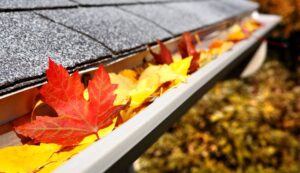Maintenance tips for the first-time homeowner
After you purchase a new home, you focus on settling in, making cosmetic changes, and doing the chores that homeowners do—mowing the lawn, maintaining the appliances, and fixing up little things here and there. But do you know the basic tasks you should do to prevent bigger problems? Many newcomers to home ownership haven’t had the experience with many routine tasks, so here are some maintenance tips for the first-time homeowner.
Clear the gutters in early spring and late fall. Get up on the ladder and remove all debris in the spring and fall. If you let too much gather there, you prohibit the necessary drainage, which could cause water damage.
Check HVAC filters. Dust builds up on air filters, impacting the efficiency. You pay more for heating and cooling your home with a dirty air filter, because the HVAC system has to work harder to maintain the desired temperature. Check, clean, and/or replace the air filters according to the manufacturer’s recommendations.
Clean the dryer vent twice a year. Dryer lint is highly flammable. You should empty the lint trap after every load, and clean the vent (which pushes the air outside) at least twice a year. The lint build-up is not only a fire hazard but also reduces the dryer’s efficiency. If you have to run the dryer more than once to dry your laundry, you probably need to clean the vent.
Test windows and doors for drafts every fall. About 80 percent of heat loss passes through cracks in your home. Before the cold weather hits, make sure you’re not letting it into your home. Check the doors, windows, electrical outlets, and other spaces that might have leaks. Replace weatherstripping and recaulk as needed.
Venture behind your major appliances. It’s not a pretty place, but you need to get behind your refrigerator, stove, washer, and dryer at least once a year. Clean the refrigerator coils. Check all appliance connections.
Replace the smoke detector and carbon monoxide detector batteries annually. Pick a date that you can remember and designate it as Battery Replacement Day. That simple step could save your home and the people who live there.
Test your wood deck’s sealant every spring. Pressure-treated wood decking will need to be re-sealed every two to three years to prevent wood rot and water damage. Pour a glass of water on the wood. If it beads up, the sealant is still protecting the wood. If not, reseal your deck to avoid having to replace it altogether later.

